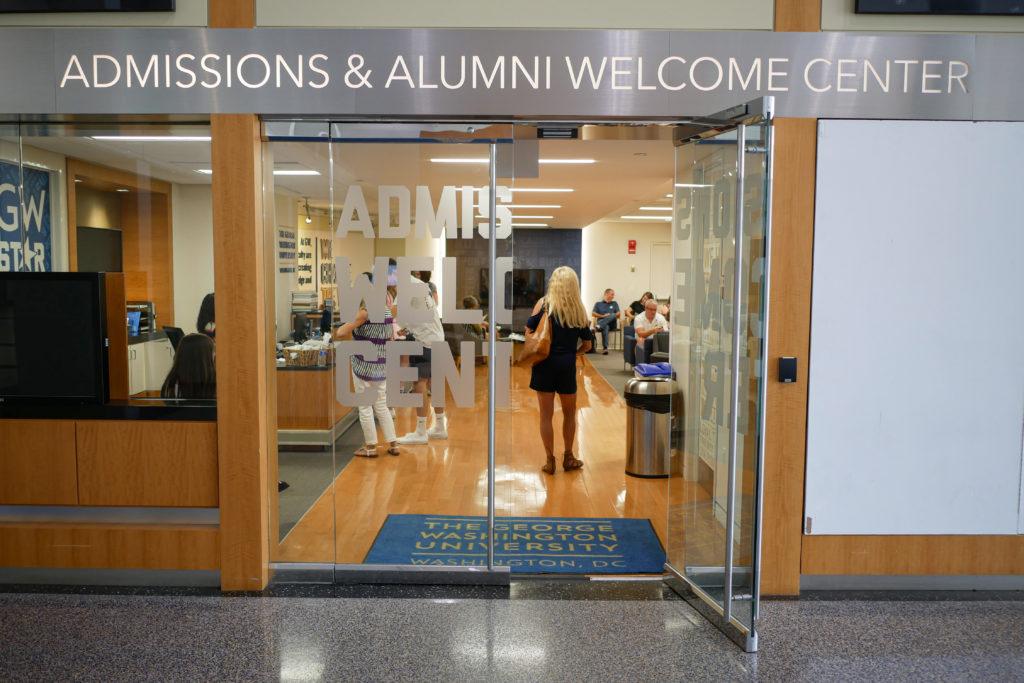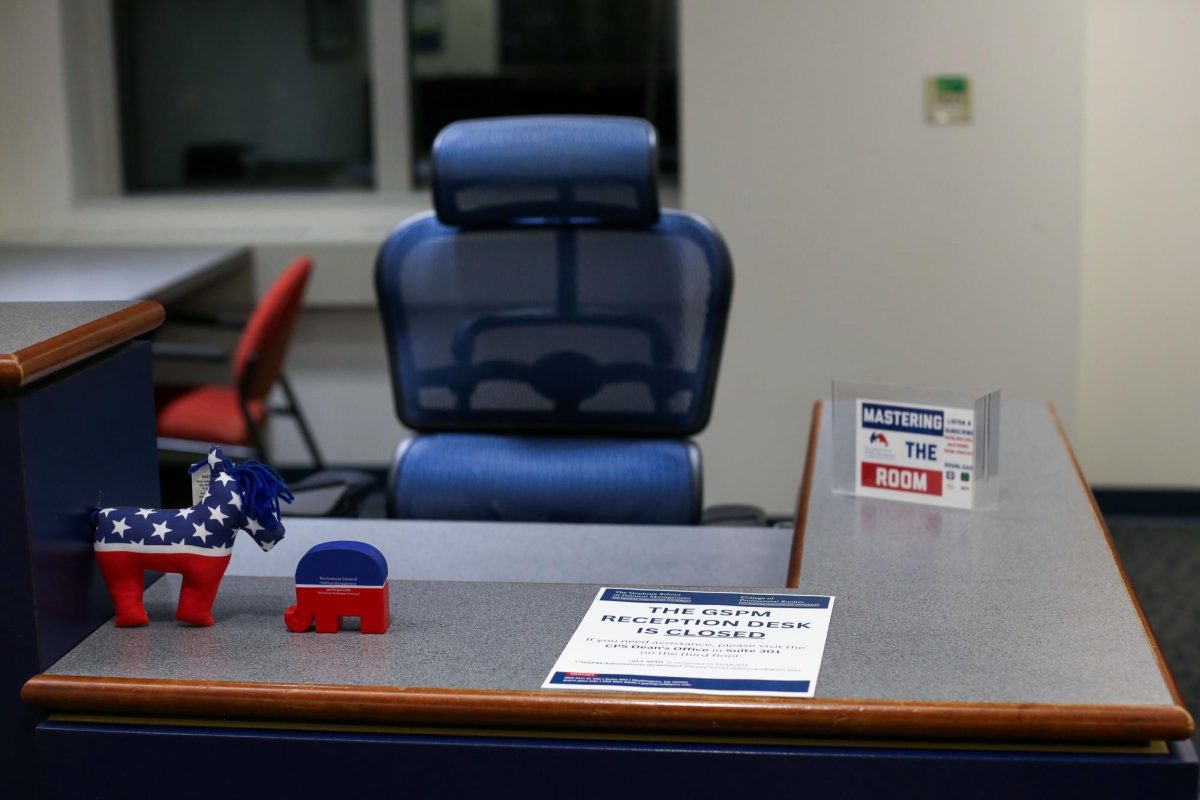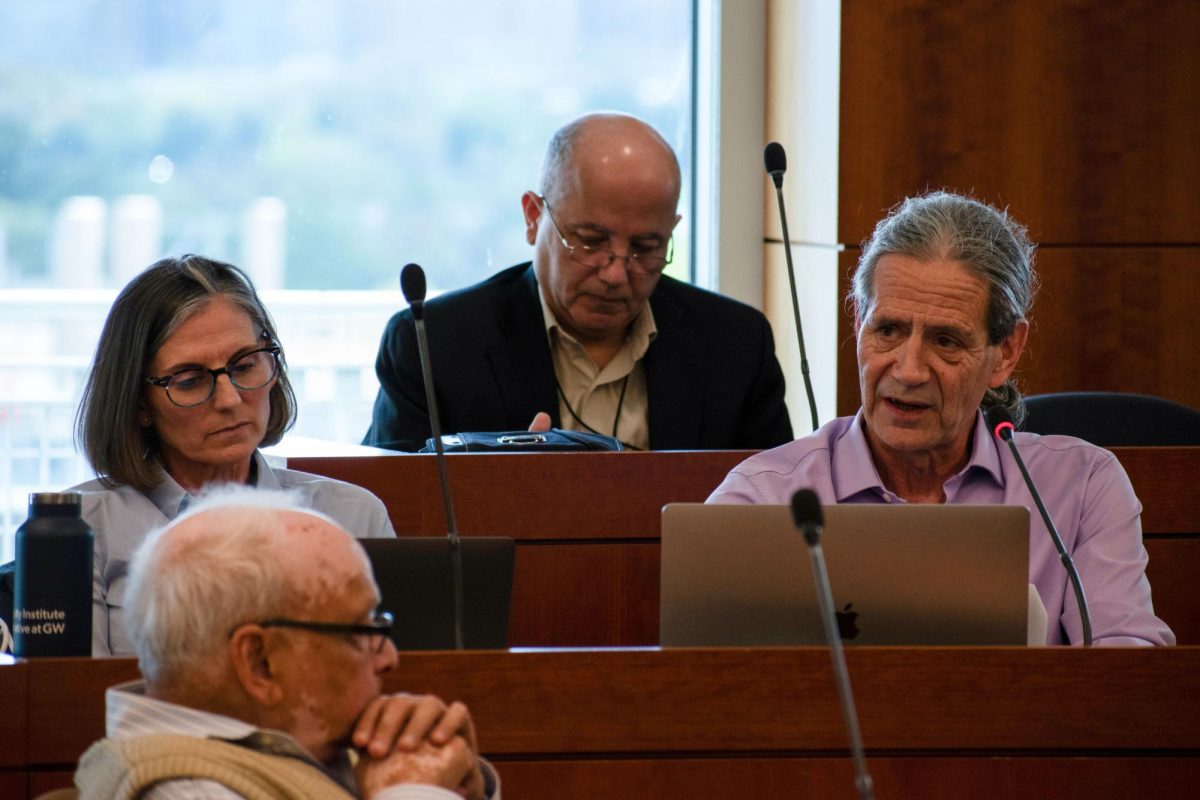After turning to remote meetings to reach prospective students during the pandemic, officials said online recruitment is here to stay.
Dean of Admissions Benjamin Toll said admissions officers plan to continue the student-led virtual tours and information sessions that they introduced when the pandemic began in 2020 to market the University to students who could not visit campus in person. Experts in higher education admissions said multiple universities have adopted virtual information sessions, but virtual recruitment has lost traction among prospective students suffering from “Zoom fatigue” after in-person tours and programming resumed in fall 2021.
Toll said GW plans to continue to “experiment” with a mix of in-person tours and virtual programming, which will include more specific information about the Mount Vernon Campus, transfer student admissions and degree programs than GW’s in-person sessions.
“Statistically, students are more likely to apply if they do both an in-person visit and a virtual opportunity,” Toll said in an email.
Officials said freshman applicants increased by 1.7 percent from 2020 to 2021, when they received 27,141 applications while recruitment remained entirely remote. Since fall 2020, the Office of Undergraduate Admissions has provided virtual information sessions, and officials expanded those events to include prospective transfer students in spring 2021.
The Office of Undergraduate Admissions ran a podcast series called GW Unfiltered on topics like dining and politics at GW from August 2020 to March 2021 to provide information to prospective students. The Office of Student Life also launched a student-led video blog series called “Connect to Campus,” which ran from September to December 2020, to engage with prospective students when most of GW’s operations were virtual.
Undergraduate enrollment dropped 7.7 percent from the 2019-20 academic year to the 2020-21 academic year after the pandemic began in March 2020.
Toll said although enrollment has started to climb since the pandemic, “Zoom fatigue” has reduced engagement in live, remote programming. But he said virtual live information sessions were still a very “effective” method to connect with students and communicate with parents because it supplements in-person Inside GW sessions.
The University paused Inside GW, an eight-day tour and information session program for admitted students and their families when the pandemic hit before resuming it last April.
“Virtual programming will remain a part of the admissions process moving forward, but we will continue to experiment with formats and types of programming to best meet the needs of each cohort of future students,” Toll said.
Jason Zara, the faculty director of undergraduate admissions, said he has led “Discover Engineering and Computer Science at SEAS” since fall 2020, a virtual information session about the School of Engineering and Applied Sciences where prospective students can participate in a Q&A session.
“As time has gone on, there are fewer participants that turn their cameras and microphones on,” Zara said in an email. “More questions come in through the chat. I think people have gotten camera exhaustion.”
He said SEAS will continue to host virtual events as the school expands in-person tours.
“I don’t think virtual information sessions replace an in-person visit to campus, and many students follow up by visiting campus,” Zara said.
Experts said online recruitment efforts have made higher education more accessible to prospective international students who may struggle traveling abroad to tour a college campus. They said colleges and universities can curate virtual information sessions to students based on their program or degree of interest and make programming schedules more flexible through pre-recorded content.
John Thelin, a professor emeritus at the University of Kentucky, said admissions staff have always hesitated to organize virtual recruitment events in fear of disrupting their “historic” and “established” institutional image with modern technology.
He said even after higher education institutions developed their virtual recruitment technology, the quality of recruitment content tends to suffer due to lag and poor design from adults who don’t have as much technological experience.
“Nothing is more boring than tired, weary technology that is not well done,” Thelin said in an email. “Students and applicants probably are far more sophisticated consumers about technology and images than are the adults who design and use them.”
He said audiences’ patience with malfunction runs thin with college admission sessions, and these events might become repetitive of college websites.
“It becomes a predictable backdrop, but not really central to hard decisions by good applicants and good institutions,” Thelin said.
Steve Goodman – an educational consultant and admission strategist at Top Colleges, an admissions consulting agency – said virtual platforms are effective for generating applications, but the percentage of students who enroll based on virtual recruitment efforts is still unclear.
“There’s the issue of whether the ‘good student’ who GW really wants is the student actually matriculating,” Goodman said. “Is that student applying? And is that student ultimately accepted and going to matriculate at GW? The question is in this post-pandemic period whether or not those tools will be sufficient to yield the students specifically that GW wants.”
He said the production cost of in-person tours could also dissuade officials from expanding in-person recruitment programming. He said that unlike online tours, in-person programming requires paid student tour guides and admissions staff, facility rental space and gifted University merchandise for visitors.
“I suspect that there will be a combination of the virtual and in-person because ultimately students and families are going to feel much more comfortable knowing that they’ve actually interacted with somebody at the University before they decide to matriculate,” Goodman said.








